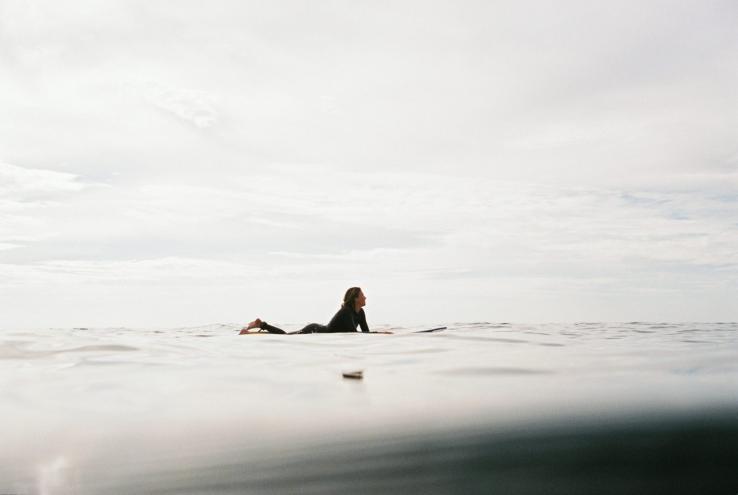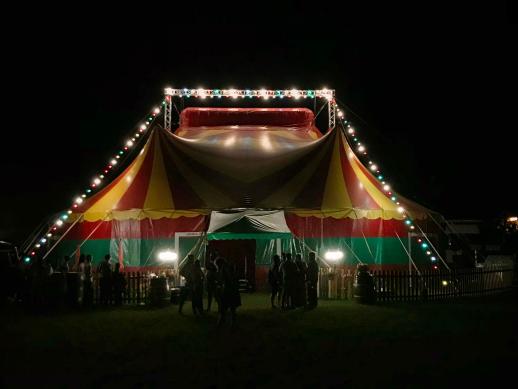When I was little, I asked my mother why she decided to have her children learn a language that was not her own. I was referring to Euskara, but what she said applied to English as well. I couldn’t have been more than eight years old, but her words stuck with me: “Languages are like coats: if you only have one, it’s the only one you can wear, rain or shine. But if you have two, or three, or even more, you can decide which one to put on every day, which one feels right for the occasion and, above all, which one best identifies you.”
An outfit worn around the world
20 Jul 2020
Thirty years later, with the wardrobe wide open and half a dozen coats staring at me, I look in the mirror and wonder why the language that fits me best is Basque. It is undeniably a mysterious language; after all, unlike most European coats, its origin is unknown – let’s just say that the first time the wardrobe was opened, Basque was already in there, even though it’s unclear whether it was made of Russian Astrakhan, Tyrolean wool or Cordovan leather. But as the Basque linguist Koldo Mitxelena once said, its real mystery lies not its origin, but how it has managed to survive for hundreds of years surrounded by so many voracious languages.
You could say that languages are like noble gases: they try to fill every available space, which is why they’re in constant competition with each other. However, the Basque corpus suggests that it didn’t follow the same pattern as other languages; Basque vocabulary reflects centuries, miles and leagues of contact with other languages. Who knows – in order to survive, Euskara may have had to learn to negotiate with the other languages that tried to crush it. And maybe the words izquierda (‘left’ in Spanish; ezkerra in Basque), aquelarre (‘witches’ coven’ in Spanish; aker larre or okela erre in Basque) and zurrón (‘sack’ in Spanish; zorro in Basque) are simply the spoils of those exchanges.
The Basque sailors who reached the shores of the North Atlantic in search of whales took their songs with them.
What is clear is that it’s a well-travelled language. Those unfamiliar with the Basque language often describe Euskara as bumpkin-like and backward but its passport boasts an impressive record of 15th century travels. The Basque sailors who reached the shores of the North Atlantic in search of whales took their songs with them. The first words uttered by Juan Sebastián Elcano were most likely in Basque as he came ashore in Sanlúcar de Barrameda having circumnavigated the globe for the first time in history.
I know that languages are not coats, but if Basque were an outfit, it would certainly not be green. And while for centuries our forests and mountains have been blanketed in a thousand shades of green, olive, turquoise and emerald, the Basque language has used the Latin loan-word berde and the neologism ´orlegi´ (literally, ‘the colour of leaves’) to refer to the colour green. There is no original word in Basque for green, the colour of hope. The absence of the word is striking, especially when the rest of the names for colours are rich and full of meaning in Basque: ´gorri´ is used for the colour red, but also the absence of additions or alterations (´larru gorri´ = ‘naked body’; ´urre gorri´ = ´unalloyed gold´); ´urdin´ is blue, ‘the colour of water’; ´beltza´ is black and shares a root with the words ´bele´ (crow) and ´arbel´ (blackboard); ´zuri´ means white and seems to come from the word ´zur´ (wood). In so many cultures white is associated with purity and innocence, but for Basque speakers, white is the colour of falsehood. Perhaps this is because, just as a tree is a different colour inside and out, people who are false think one thing but do another.
But… how can it be that we have ´gorri´, ´urdin´, ´beltz´ and ´zuri´ in Euskara and no bona fide word for ‘green’? It may be the same reason why the Inuit peoples of the American Arctic don’t have a plain and simple word for the colour white, or why the Maori in the red deserts of New Zealand apparently have no word for red. In a country with so many shades of green, a language that serves to identify the world around us would never use the same term for the leaves of an oak tree, the needles of a pine or the grass in springtime. Therefore, the word ´berde´ would not have arrived until the Roman Empire brought new colours to the Basque vocabulary. So, if Euskara were a coat, it wouldn’t be green but rather a patchwork of different shades of green.

If Basque were an outfit, some would consider it old-fashioned and démodé. But for others it would be the height of cool, vintage and edgy. Using an animal allegory, the linguist Juan Uriagereka compared Euskara to a shark, a species that predates the dinosaur by two hundred million years. He said that no matter old its origin (obviously not as old as the shark), if an animal or a language has managed to survive until now, it’s because it has adapted to its environment; and for anyone who thinks otherwise, the linguist suggests we pit an ape (a much more ‘modern’ mammal), against a shark (in the water, of course) and see what happens. In any case, the longevity of a language, specifically Basque, is a failsafe guarantee for its future. After all, it has withstood the test of time and is fully braced to face the challenges ahead.
If Euskara were an article of clothing, it’d be worn by men and women alike since it is a genderless language.
If Euskara were an article of clothing, it’d be worn by men and women alike since it is a genderless language. It wouldn’t be a unisex garment, however, because Basque verbs have a unique ability to indicate the gender of the person being addressed. It’d be very easy to wear because all the auxiliary verbs in the language fit on a single sheet of paper – something Romance languages can only dream of. It could even be a magic cape. Is it not mysterious that the basic elements of life sound so much alike: ´ur´ (water), ´lur´ (earth), ´zur´ (wood), ´su´ (fire), ´elur´ (snow), ´egur´ (wood), ´hezur´ (bone)…?
I recently discovered, in fact, that Basque indeed is an article of clothing. In English, the word ‘basque’ means ‘corset’, the tight-fitting bodice that girdles the female body from chest to hips. Who knows, maybe that’s how we’ve been seen by others, a restricted and closed linguistic community. Or maybe there are no hidden parallels. After all, the language that keeps me warm, alive and dreaming is just the opposite – a friendly, open, flexible language used by just over a million people every day to learn, study, speak out, share their lives and, most importantly, to see themselves in the world around them.





